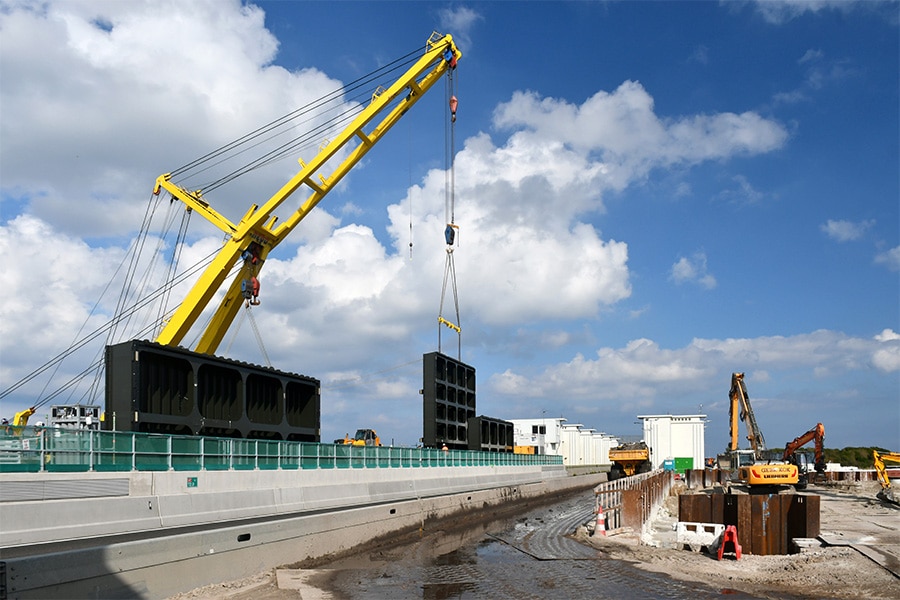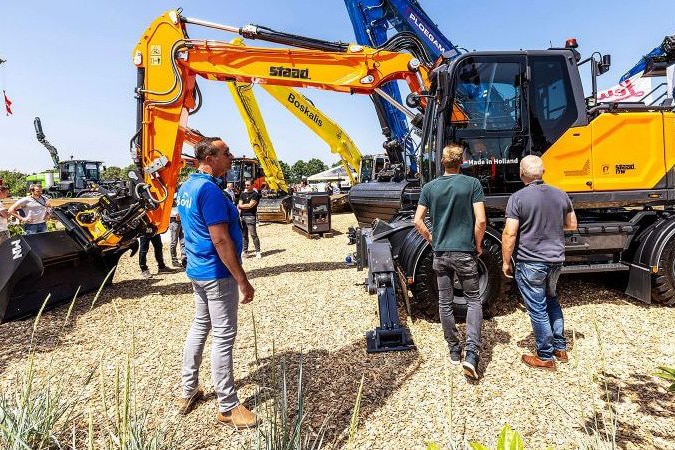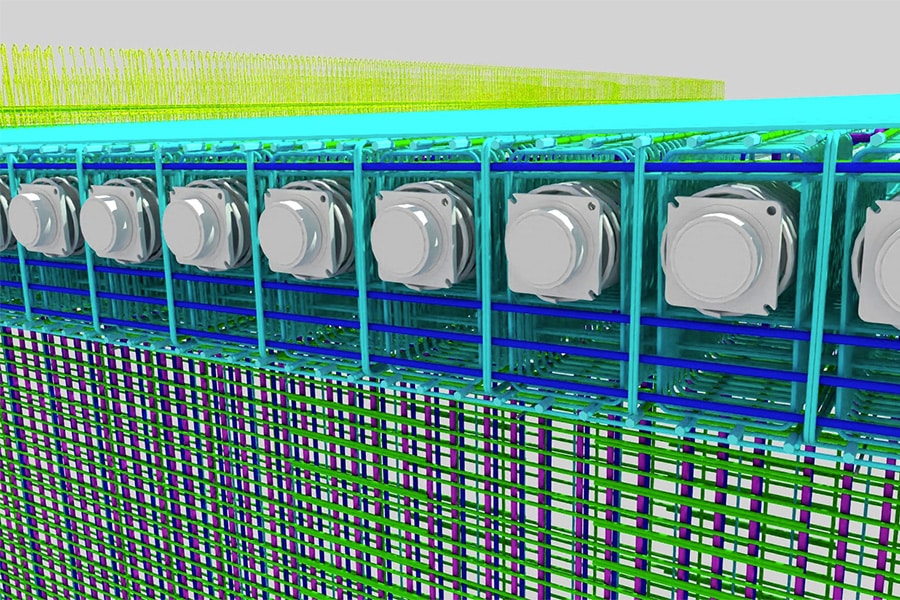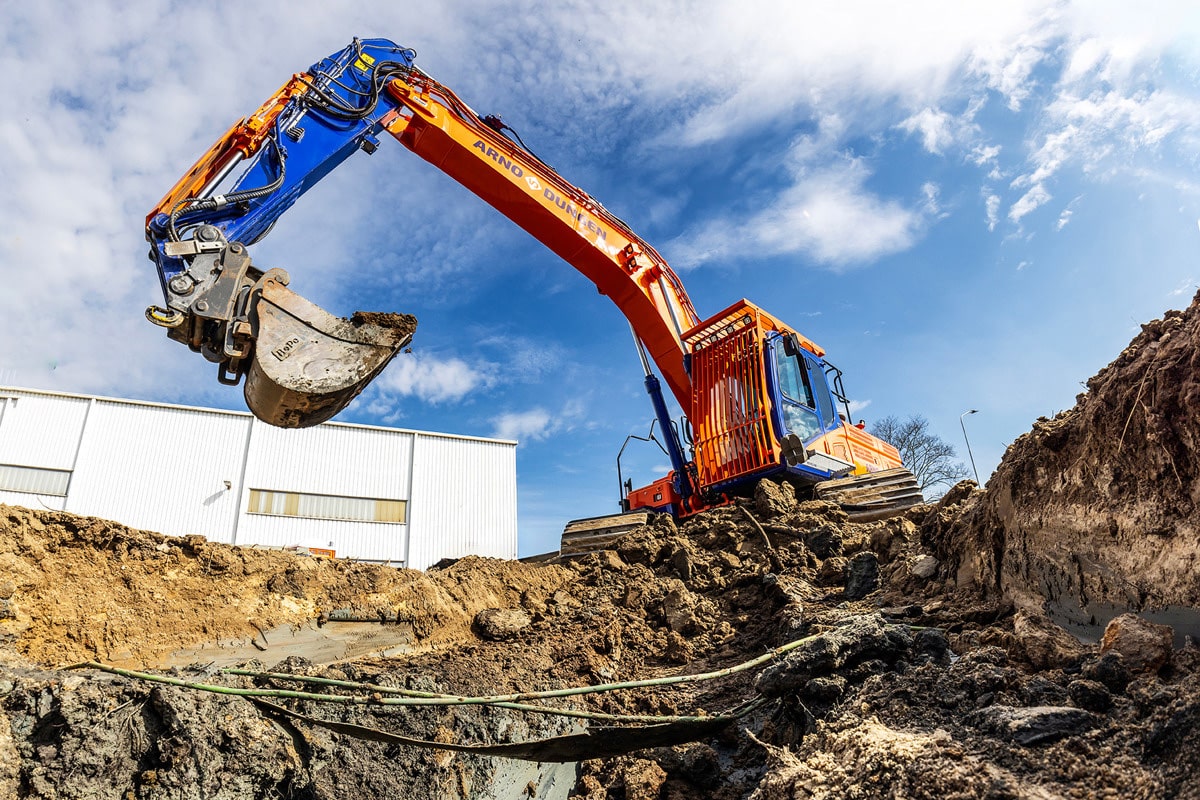
Special earthmoving during construction of second lock chamber Eefde
The "Eefde Lock Expansion" project is being realized on behalf of Rijkswaterstaat. The current lock, in use since 1933, is an important link for freight transport between the ports of Amsterdam, Rotterdam, Antwerp and the hinterland. Annually, 12,000 cargo ships pass through the lock and this number will grow considerably in the future. And that while the average waiting time has been too long for ages. In addition, the presence of only one lock creates a vulnerable situation in case of maintenance or calamities. By expanding the current lock with a second lock chamber, more ships will be able to pass through in the same amount of time. It increases the accessibility of Twente and thus stimulates economic growth in the region.
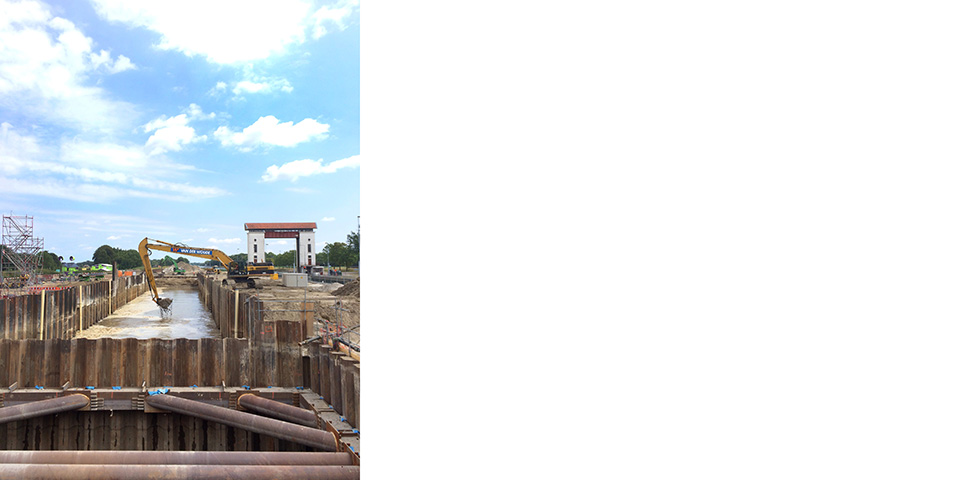
This unique project brings together many disciplines of water work and earthwork.
Van den Herik-Sliedrecht is working on this project on behalf of contractor combination Lock to Twente (L2T). "We are true hydraulic engineers," explains Wessel Breman, project engineer at Van den Herik. "Working with water is our passion, it forms our inspiration to come up with infrastructural solutions every day. This also applies to the Eefde lock expansion project. We are providing the groundwork and installing soil protection in the outer harbors. We are also responsible for carrying out OCE work: the Detection of Conventional Explosives." Jurriën Hagen, Project Coordinator L2T, explains why precisely Van den Herik is the appropriate party for this: "It is a hydraulic engineering company, with specialties in the field of earthworks and soil protection. And with knowledge of OCE. Then you have all the necessary facets in one party. Good cooperation is crucial in these kinds of large projects. Thanks to skilled people, good relations, short lines of communication and respect for everyone's interests, the work is carried out while maintaining quality. It also ensures an excellent progress of the project."
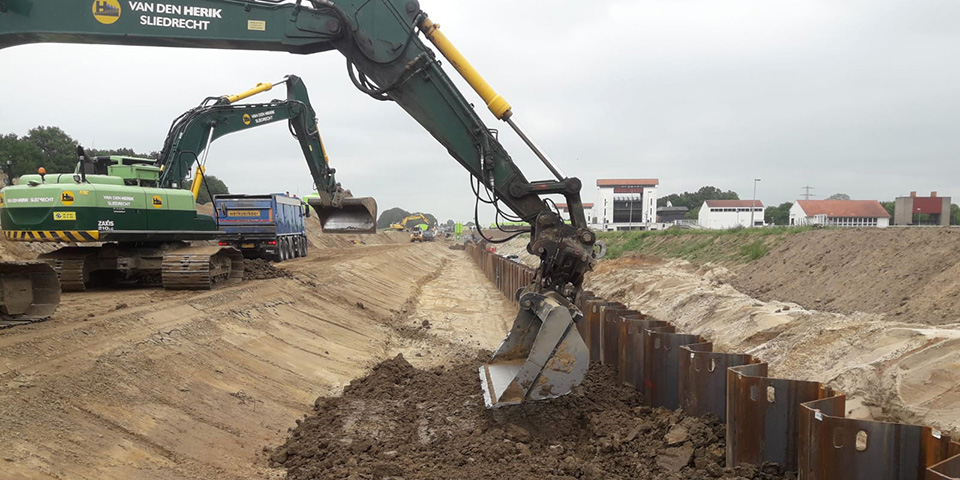
Realization of the primary flood barrier by Van den Herik: application of the clay outer slope.
Known territory
Wessel: "The Twente canals are familiar territory for us: we are already working here on the multi-year maintenance of various waterways and associated bridges, locks, banks and groynes. At lock Eefde, following our OCE investigation, two WWII aerial bombs were actually removed by the EOD. We then started excavating three construction pits that will form the new lock: the Lower Head (BEH), the wharf and the Upper Head (BOH). At this time, a new primary flood barrier on the IJssel side and a new regional flood barrier on the canal side are being constructed. Then we will continue with the excavation of two outer harbors (canal side and IJssel side) so that the new lock will be accessible to shipping from the IJssel and Twente Canal. Finally, we will install soil protection in the outer harbors of both the existing and the new lock. Sometimes the work space is limited, but through proper coordination with all parties involved, the work can proceed smoothly. For complex issues, for which there is no standard answer, we come up with solutions. The challenge for the cofferdams (Lower Head and Upper Head) was the realization of a deep excavation with the presence of a strut frame, in combination with previously installed anchoring to the soil. During the excavation, the cofferdam was underwater so the anchoring was not visible. Not only do you then have to have suitable equipment, but the accuracy of the equipment is also very important. At those times we like to come up with innovative, creative infrastructural solutions." Wessel concludes, "In this unique project, many of our disciplines in waterworks and earthworks come together. This makes it fun, diverse and challenging."
